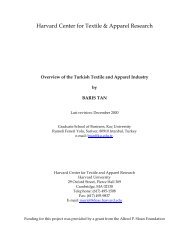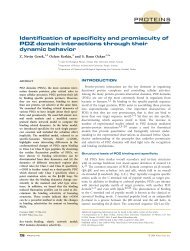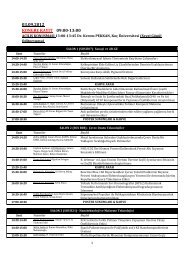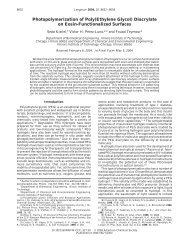Roman Landholding in Asia Minor Author(s): Thomas Robert ...
Roman Landholding in Asia Minor Author(s): Thomas Robert ...
Roman Landholding in Asia Minor Author(s): Thomas Robert ...
You also want an ePaper? Increase the reach of your titles
YUMPU automatically turns print PDFs into web optimized ePapers that Google loves.
Vol. Ixv] <strong>Roman</strong> <strong>Landhold<strong>in</strong>g</strong> <strong>in</strong> <strong>Asia</strong> M<strong>in</strong>or 231<br />
We have seen that we may expect to f<strong>in</strong>d imperial estates<br />
<strong>in</strong> the region of Antioch of Pisidia. Our evidence, however, is<br />
disappo<strong>in</strong>t<strong>in</strong>g. Not only is good evidence late,120 but the<br />
chief documents are <strong>in</strong>conclusive. A series of <strong>in</strong>scriptions,<br />
found at Gondanly and at Saghir near the sanctuary of Men<br />
<strong>in</strong> Kara Kush Dagh, relates to a pagan religious society of<br />
the third century A.D., called the Tekmoreian Guest Friends,<br />
which Ramsay believes was especially fostered on imperial<br />
estates to counter the grow<strong>in</strong>g <strong>in</strong>fluence of Christianity.121<br />
These <strong>in</strong>scriptions conta<strong>in</strong> long lists of persons who made<br />
contributions to the society, with their names and their<br />
places of citizenship and of residence. Because they were<br />
largely from villages, and because an <strong>in</strong>scription from one of<br />
these, Karbokome, mentions a priest and his actor, who is<br />
also a priest, Ramsay believed that they were situated upon<br />
imperial estates. However, no imperial officials are mentioned<br />
<strong>in</strong> the <strong>in</strong>scriptions, and their absence as well as the absence<br />
of any mention of conductores is perhaps best expla<strong>in</strong>ed on the<br />
hypothesis that these <strong>in</strong>scriptions had noth<strong>in</strong>g to do with the<br />
imperial doma<strong>in</strong>s. That the priest at Karbokome was actually<br />
the imperial procurator is purely an assumption; he had a<br />
<strong>Roman</strong> name but the property may be his own, or it may be<br />
temple land. Moreover, the contributors were not restricted<br />
to <strong>in</strong>habitants of villages. There are <strong>in</strong>habitants of distant<br />
cities such as Archelais of Cappadocia and Attaleia of Pam-<br />
phylia, and of many <strong>in</strong> the surround<strong>in</strong>g region, Adada, Apol-<br />
lonia, Julia, Amblada, Metropolis, Tityassus, and Mallus and<br />
120 Unless the Ti. Claudius Vicenio of Ramsay, E.R.P. 345 was a freedman of<br />
Claudius or Tiberius (before 4 A.D.), or received citizenship from one of them.<br />
He is not called a freedman nor yet an imperial official; there are many Tiberii<br />
Claudii later than the first century; cf. M.A.M.A. I, No. 31a. A Lat<strong>in</strong> <strong>in</strong>scrip-<br />
tion <strong>in</strong> the vic<strong>in</strong>ity of Antioch need not imply a very early date.<br />
121 The majority of these <strong>in</strong>scriptions were published by Sterrett, Wolfe<br />
Exped. 226-273, Nos. 366-388; republished with revisions and additional texts<br />
by Ramsay <strong>in</strong> E.R.P. 305-377; he discusses some of the documents <strong>in</strong> Ann. Brit.<br />
Sch. Athens xvIII (1911-1912), 62-67; and adds a series of revised read<strong>in</strong>gs,<br />
<strong>in</strong>clud<strong>in</strong>g the <strong>in</strong>scription of Karbokome, <strong>in</strong> J.H.S. xxxII (1912), 151-170. On<br />
the brabcutae see above, notes 48-50 and text.



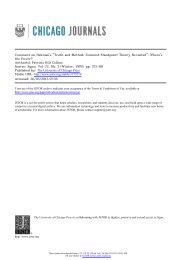
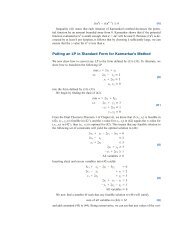
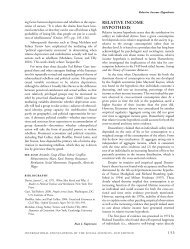
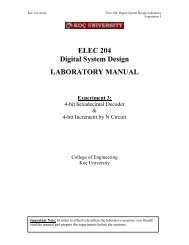
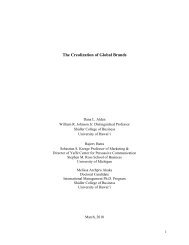

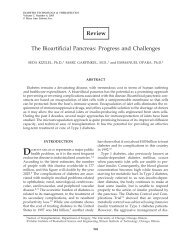
![]_[O](https://img.yumpu.com/10363126/1/190x138/-o.jpg?quality=85)
